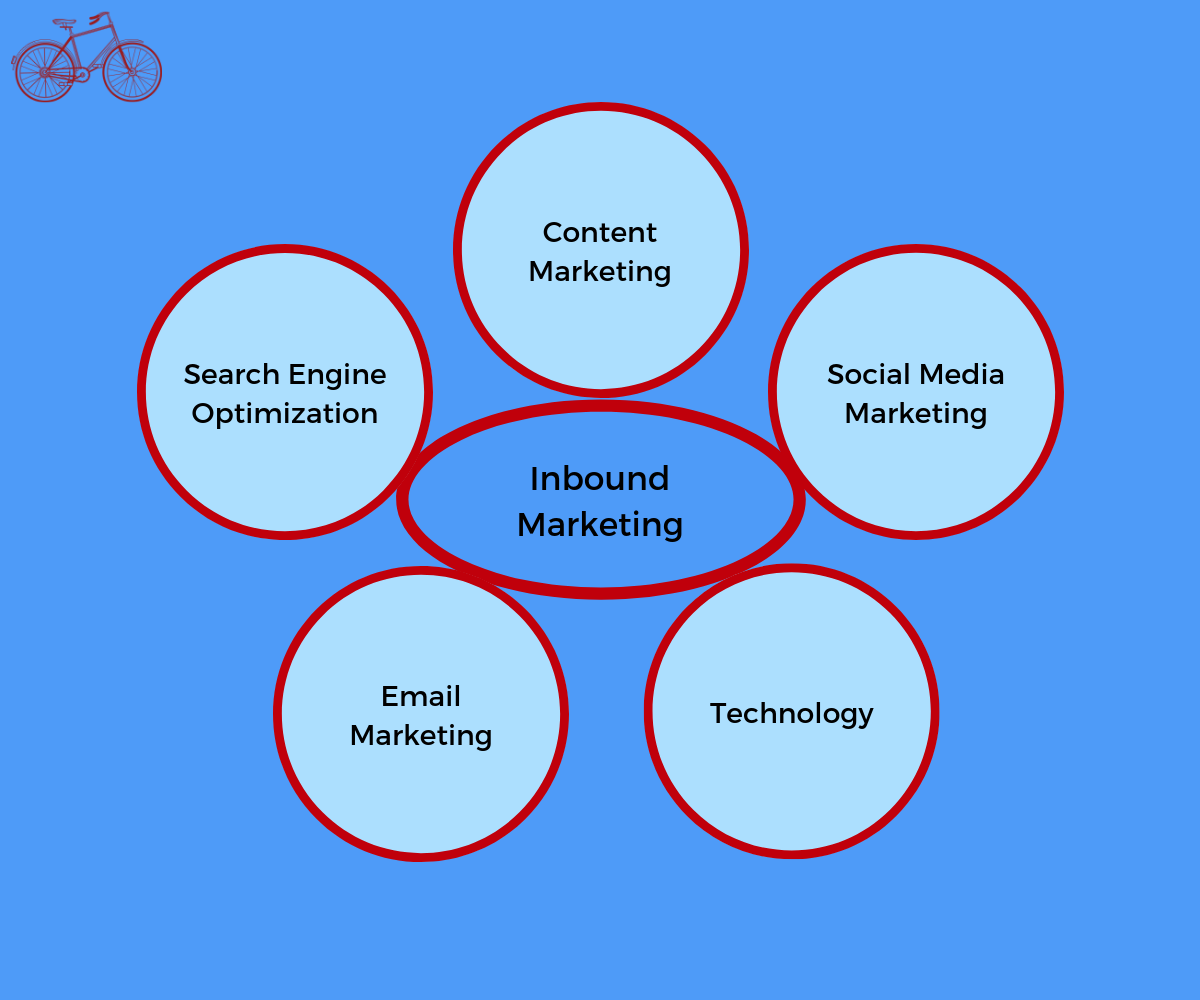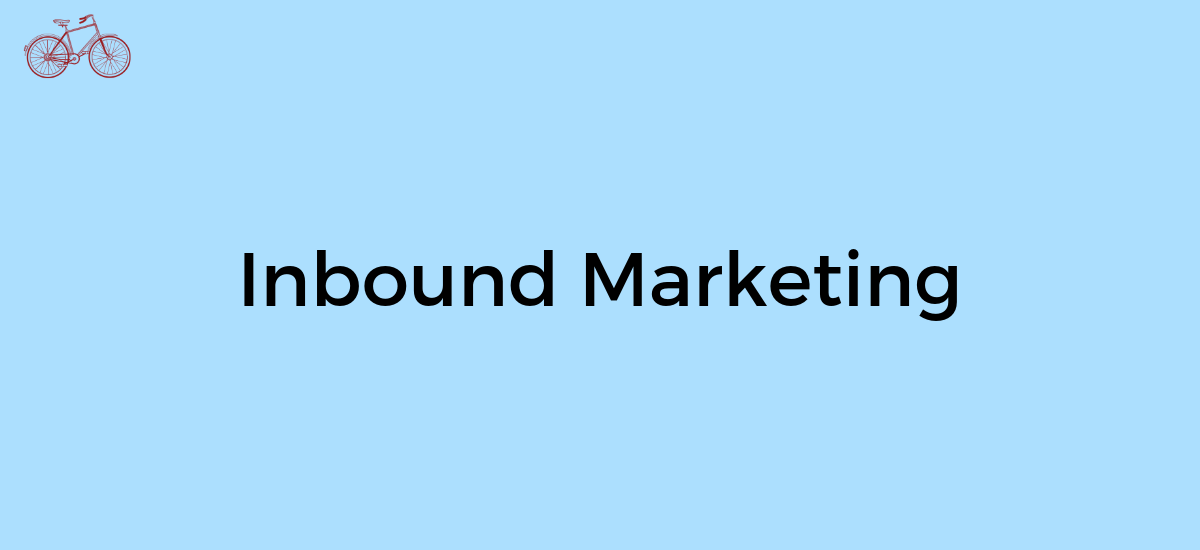Non-intrusive marketing. Companies are there when we need them and we want to hear from them. It’s far more desirable as a consumer.
Interruption annoys. It can create ill-will. It becomes noise.
This is why inbound marketing, which is a strategy based on non-intrusive attraction of prospects and customers, is more desirable. And, it is an effective and profitable strategy for building a business.
Here, we will look at an overview of inbound marketing and how we might be able to use it as our core marketing strategy.
What is Inbound Marketing?
Inbound marketing is a marketing strategy that uses various awareness and demand generation techniques to attract prospects to your product or service. Then, with the help of automation tools and systems, convert those prospects into qualified leads and to loyal customers.
Inbound marketing is a concept and strategy coined, and ultimately perfected, by HubSpot. It combines traditional pull marketing strategies and the ideas of permission marketing from Seth Godin.
Combine these two concepts, add the fact that prospects do extensive buying research online and through references groups, tools now allow companies to automate lead nurturing, and you have inbound marketing.
Inbound marketing consists of using web search and SEO, social media, and various other channels to attract, convert, and retain customers. This is how HubSpot describes the process.
Inbound marketing has become a widely accepted marketing strategy and companies of all sizes and in all industries can either use it exclusively, or as part of their overall marketing mix strategy.
What is Pull Marketing?
In order to sufficiently understand inbound marketing, we should understand its roots. It has its roots in the traditional marketing strategy of pull marketing.
Pull marketing is the idea that you create interest and demand for your product through non-intrusive mediums. This is content marketing, guerilla marketing, social media, SEO, and influencer marketing. Just to name a few.
But, so much of what we think about as pull marketing tactics use modern buying approaches and mediums. Pull marketing actually has its roots in traditional marketing theory. Prior to the internet and more modern technologies, it was a practiced marketing strategy.
Thus, inbound marketing has its roots in pull marketing, and it is an evolution and expansion on the strategy.
What is Permission Marketing?
Another contributing theory is the permission marketing strategy.
Permission marketing was laid out in the 1999 book by Seth Godin, where he argues that we should no longer interrupt our prospects and customers. We should ask and gain permission to communicate with them.
This is a theory, which again requires the attraction of prospects to your product or company. Then, ask them permission to communicate with them further. Each additional piece of permission that is granted is a conversion step.
Take the concept of pull marketing, add permission marketing, and finally you have the building blocks that helped form inbound marketing.
Components of Inbound Marketing
Executing an inbound marketing strategy requires the use of various strategies, tactics, and tools. The combination of these components are how we create and execute an effective strategy.
The components we should consider and utilize in our attraction and conversion strategies are the following.

Search Engine Optimization
Search engine optimization (SEO) is a critical component. This part of the process is determining what your target audience is looking for. Then, creating the helpful content to help them in their search.
The SEO component is about finding search terms and areas of interest to your customers. Then, optimizing your content such that you can be found. This process is the foundation to an effective strategy.
Content Marketing
Content marketing is the component that takes your SEO efforts and translates it into SEO friendly content, as well as content in various other forms. Whether that be video, infographics, eBooks, or guides.
Content marketing assists in the attraction part of inbound marketing. But, it also contributes to conversion of prospects into customers and helps to retain current customers. It plays an important role across all stages of the inbound marketing process.
Social Media Marketing
Social media marketing is another component of the inbound marketing process that helps to create awareness about your product and company. Social media can be used as a non-intrusive way to communicate to prospects in the awareness stage.
Then, once an audience has been built, social media can be used to nurture that audience to love your content, message, and help. It is an important component that contributes to the overall inbound marketing process.
Email Marketing
Email marketing is a critical communication channel in inbound marketing and an excellent communication channel for the conversion process. After achieving permission to communicate with contacts, email can be used to add value. Turning them into prospects, leads, and ultimately customers.
Email is an important channel, due to the fact that it is one that is entirely in the control of the company.
Technology
The last component we will discuss is technology. Technology plays an important role in our inbound marketing process. It helps us to track, organize, segment, and automate our contacts and processes. Then, we use the technology stack to analyze the effectiveness of our strategy.
The technology used is critical in supporting all the inbound marketing activities and goals that the company is looking to achieve.
How we understand and use the various components of inbound marketing are determined by our target audience, our goals, and our competency of various components. Taking these three ideas, then compiling a strategy that effectively uses the components above is how we can create an effective inbound marketing strategy.
The Inbound Marketing Process
Inbound marketing has a clear process. HubSpot defines it with various areas and sub-areas, but there are three core areas of the inbound marketing process.
The core areas of the inbound marketing process are attraction, conversion, and retention. The details of these areas are the following.

Attraction
The attraction stage of the inbound marketing process is where we pull prospects to our product and company. Through interest in our market niche with SEO, content marketing, and social media marketing.
The attraction stage is how we fill the top of our funnel with interested contacts who can be converted into prospects, leads, and customers.
Conversion
Conversion, which is the second stage of the inbound marketing process is where traffic is turned into customers. There are many stages along the way, which the conversion stage consists of the following conversion points.
- The first conversion point is converting traffic into contacts.
- Then, contacts are converted into prospects.
- Prospects are later converted into leads.
- Lastly, leads are converted into customers.
These are the main areas of conversion in the inbound marketing process. Each can use any of the components of inbound marketing to reach the conversion goal.
Retention
This leads us to the last area of the inbound marketing process. This is the customer retention stage. Once we have converted our leads into customers, then we want to retain them. We do this by continually providing value to our customers.
These are the three core stages of the inbound marketing process. Each stage has components that need to be looked at independently and as a function of the entire process. And, each stage plays an equally important role within inbound marketing.
Success with Inbound Marketing
Inbound marketing can be difficult to get started with. Primarily because it takes a long time to build a substantial funnel of traffic, contacts, leads, and customers. Especially if starting from ground zero.
That is why success needs to be measured long-term. Typically, the time frame should consist of twelve to eighteen months of pipeline building. Then, begin ruthless tracking of conversion, success, and ROI. Once this time period has been reached, enough critical mass should be reached to test and adjust.
During this twelve to eighteen-month period, a process of consistently creating content to build traffic should be implemented. Then, converting traffic into contacts through content offers, blog subscribers, and even generating customers should be used. Lastly, creating and testing lead nurturing funnels should be implemented during this stage. This is the learning period for what works for your business. Using the principles and components of inbound marketing, this is a critical stage in laying the foundation to build success.
Inbound marketing is an effective strategy, which uses pull marketing and permission marketing as its foundation. By attracting customers through non-intrusive mediums, we can create more meaningful relationships with our customers.
